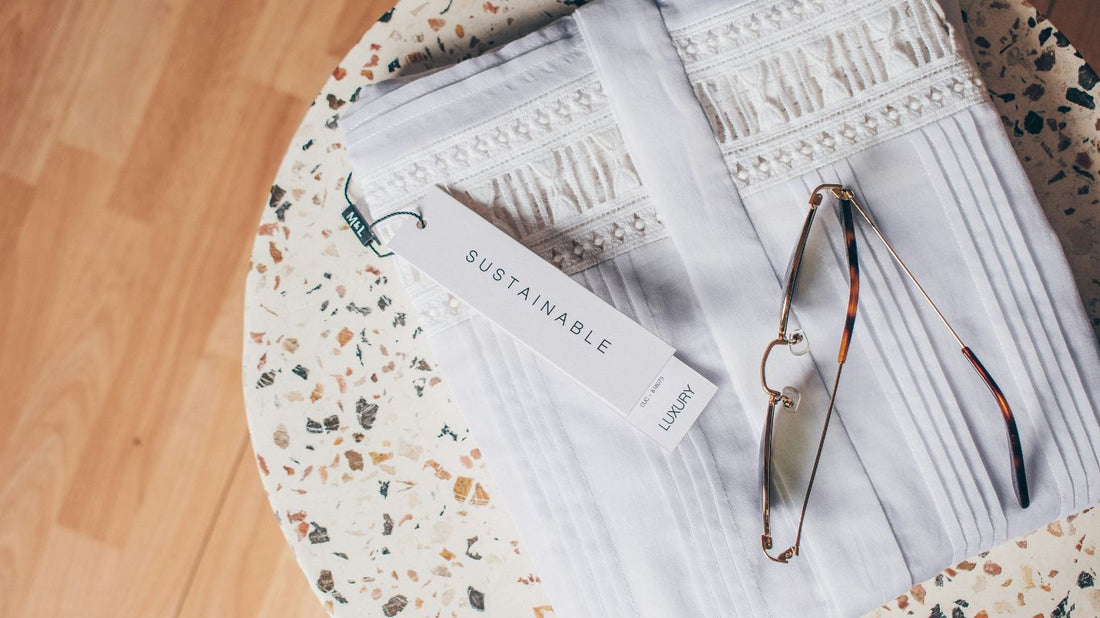
How Circular Fashion Can Dress Africa For A Sustainable Future
Partager
Buhle Mbonambi
Traditional fashion follows a linear model: raw materials are extracted, garments are produced, worn, and — unless they are luxury garments — discarded. This process has a significant environmental impact, as the fashion industry’s insatiable appetite for resources, coupled with fast fashion, has contributed to pollution, climate change, and waste.
According to the UN's Fashion Charter, the fashion industry is responsible for 4-8% of global greenhouse gas emissions. This alarming figure underscores the urgent need for change.
While many brands and industry bodies have pledged to reduce their carbon footprint, manufacturing remains a major culprit, with costs associated with substantial transformation hindering progress. As a result, the industry continues to grapple with balancing sustainability and profitability.

And yet, the fashion industry can no longer afford to overlook its environmental impact. There is a growing movement to change the way people consume fashion, with sustainable methods of production and circularity at the forefront. Many stakeholders are raising awareness about issues like textile waste and overconsumption.
Circular Fashion: A New Way of Thinking
Circular fashion reimagines the life cycle of clothing. Instead of discarding unwanted clothes, it promotes repair, reuse, and repurposing. Think of it as giving your favourite dress a second life by swapping it with a friend or tailoring it into a new outfit.
At the AFI Masterclass during Joburg Fashion Week 2023, panellists Felipe Mazibuko, Alia Baré, Khensani Mohlatlole, and Shamyra Moodley discussed the state of circular fashion in Africa and its potential economic benefits. Fashion designer Alia Baré emphasized the significance of circularity in the African fashion industry, referencing the continent’s historical practices of resourcefulness and sustainability.
Baré highlighted how traditional African cultures have long embraced circular principles, such as using recycled materials and repurposing garments. This deep-rooted understanding of sustainability provides a strong foundation for Africa to lead the way in circular fashion.
While modern fashion trends have leaned toward a linear model of consumption and disposal, the panellists advocated for a return to these traditional values.
The Economic Potential of Circular Fashion
Industry expert Bruce Sakindi from Kuza Africa discussed the opportunities presented by adopting a circular fashion model on the continent. “The circular economy presents a huge opportunity for the African textile and garment manufacturing market in that it prolongs the cycle of a product or the cycle of sale and innovation,” Sakindi said.
While Africa currently bears the brunt of fast fashion and second-hand clothing dumping, some governments are taking action. “When you look at what Rwanda has done with the policy enacted in 2016 alongside the East African Community to ban the import of second-hand clothing, it created a platform to eradicate consumption and focus more on local production,” Sakindi explained.
By embracing circular fashion, Africa can create new jobs in collection, repair, resale, and upcycling — addressing the continent's youth unemployment challenge.
“Circular fashion allows Africa to leapfrog the environmental pitfalls of the traditional fashion industry. By focusing on sustainability from the outset, African nations can build a stronger, more competitive textile and garment sector,” Sakindi said.
Sustainability at COP28: A Global Stage for Circular Fashion
During COP28 in Dubai in 2023, discussions focused on how the fashion industry can take meaningful steps toward sustainability. Despite its substantial contribution to global trade and employment, the industry needs systemic change to achieve its net-zero goal by 2050.
Rayana Edwards, founder of the South African brand Sari For Change, was a keynote speaker at the conference. Edwards emphasised the importance of circularity and the role the fashion industry plays in promoting sustainability.

“We need to understand the consequences of our buying. Consciousness of the fabric and its effect on our environment, the manufacturing process, the conditions of the producer, and how small changes as a collective can reduce our carbon footprint,” she explained.
Edwards also highlighted the potential for fashion to inform people about the priority of people, planet, and profit, saying, “Enhancing livelihoods while being aware of our environment can be brought into an entrepreneurial space.”
Why Circular Fashion Is a Game Changer for Africa
- New Jobs, New Opportunities: Circular fashion creates jobs in collection, repair, resale, and upcycling. This is particularly exciting for Africa, where youth unemployment is a pressing issue.
- Building a Stronger Industry: "Africa's textile and garment manufacturing market is still in its nascent stages," says Sakindi. By focusing on circularity, African nations can avoid the environmental pitfalls of traditional fashion and build a sustainable industry from the ground up.
- Leading the Charge: The global circular textile economy is estimated to be worth $5 trillion by 2030. With its focus on innovation and a growing middle class, Africa is well-positioned to lead this movement.
Challenges and the Road Ahead

While the potential of circular fashion is undeniable, challenges remain. Educating consumers about its importance and supporting local designers who embrace sustainable practices is key. Government policies that incentivise circularity, such as Rwanda's ban on second-hand clothing imports, can also play a crucial role.
What You Can Do
Everyone can participate in the circular fashion movement. Here’s how:
- Shop vintage and pre-owned: Give pre-loved clothes a new lease on life.
- Invest in quality pieces: Buy well-made garments that will last longer.
- Swap clothes with friends: Host a clothing swap and breathe new life into your wardrobe.
- Support local, sustainable designers: Seek out African designers committed to eco-conscious practices.
By embracing circular fashion, Africa's fashion industry can thrive while protecting the environment.
Looking good doesn't have to cost the Earth.
